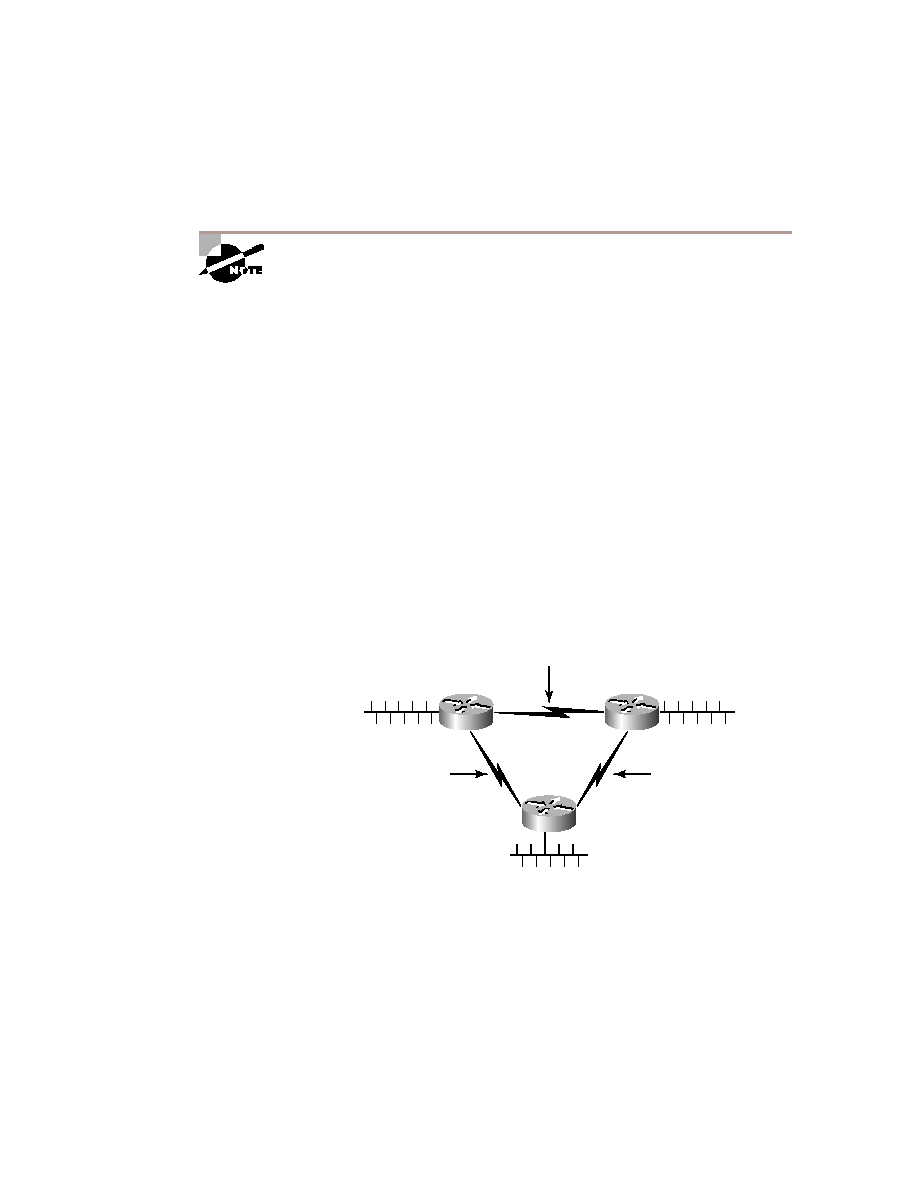
Classful Routing
37
RIP version 2 (RIPv2) is an example of a classless routing protocol. Classless
routing is discussed later in this chapter.
Devices in an internetwork must know the routing mask associated with
any advertised subnets, or those subnets cannot be advertised. If the subnet
mask does not match the receiving device, then the receiving device must
summarize the received route as a classful boundary and then send the
default routing mask in its own advertisements.
Classful routing protocols must exchange routing information using the
same subnet mask since subnet mask information is not sent in the periodic
updates.
The problem with classful routing protocols is wasted address space. For
example, in Figure 2.1, there is a Class C network address of 192.16.10.0,
using the subnet mask 255.255.255.240. The subnets would be 16, 32, 48,
64, etc. Each subnet has 14 valid hosts. In the figure, each LAN has a require-
ment of 10 hosts each, which is fine except for the WAN links connecting the
sites. WAN links use only two IP addresses. Since the WAN interfaces must
use the same mask, they waste 12 host addresses.
F I G U R E 2 . 1
Classful routing protocol issues
Another problem with classful routing protocols is the periodic routing
updates sent out all active interfaces of every router. Distance-vector proto-
cols, which we discuss next, are true classful routing protocols that send
32
16
48
96
80
64
Copyright ©2001 SYBEX , Inc., Alameda, CA
www.sybex.com
